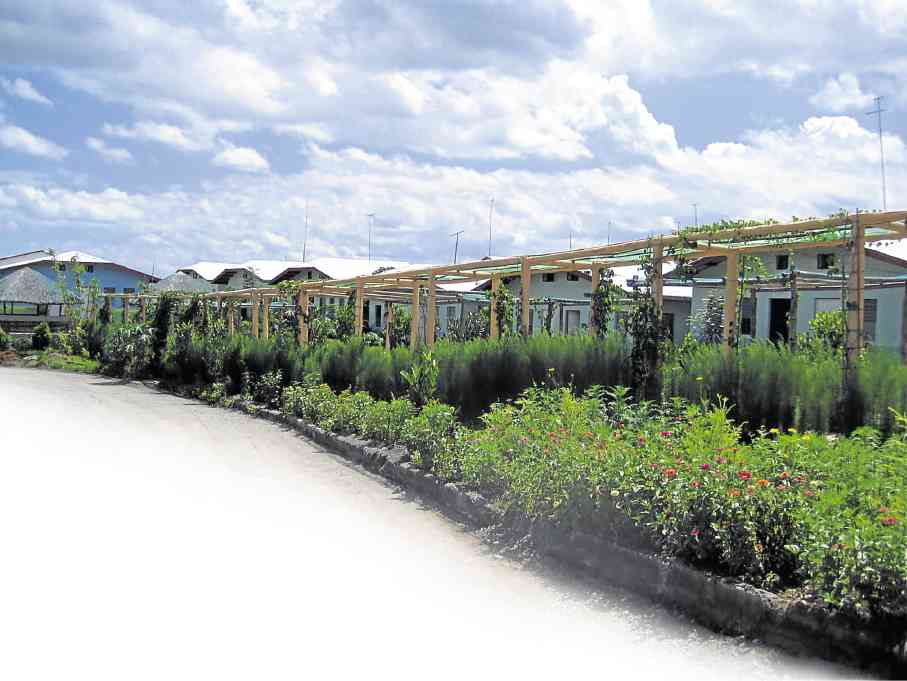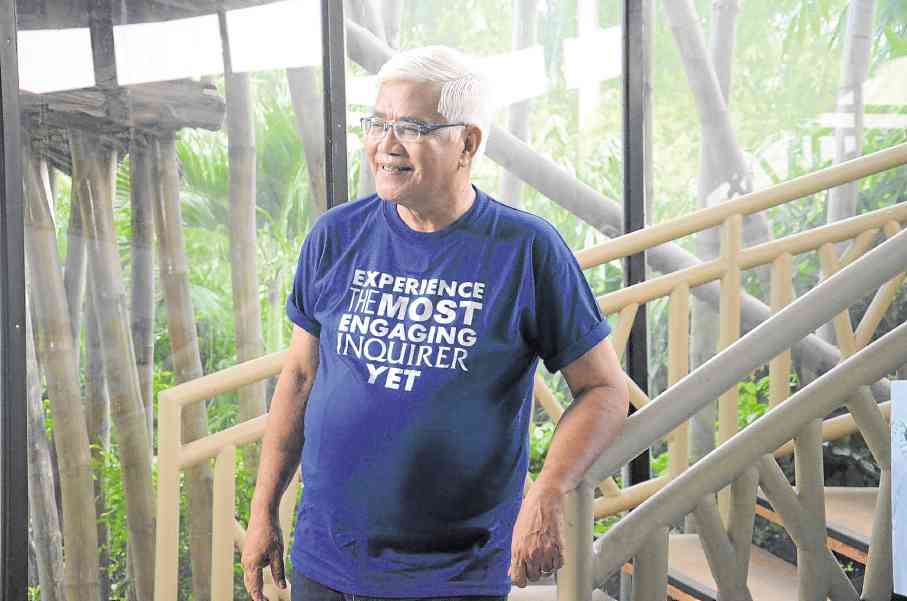Tony Meloto: offers ray of hope, silver lining for marginalized
He is not affiliated with any of the country’s real estate giants, but his works place him alongside the “pillars” of this growing industry.
Tony Meloto, in his own right, is no different from the rest of the bigwigs that have spearheaded the creation of the many landmark masterpieces and structures that continue to define and alter the dynamic city and provincial skylines. His works, instead, have brought him to address the needs of those living in society’s fringes.
Through Gawad Kalinga, Meloto has proven to be a key player in the housing industry, helping provide decent homes and sustainable livelihood to the marginalized and homeless Filipinos.
And with Christmas just around the corner, Inquirer Property deemed it proper to pay homage to the likes of Meloto who served as a guiding force, delivering “gifts of change” to make lives better.
Get to know more about the strong proponent behind Gawad Kalinga, a Philippine-based movement that aims to end poverty by helping restore the dignity of the poor through access to life’s basic rights such as food and shelter.
Article continues after this advertisementHere is the story behind this noble advocacy, which targets to end poverty for 5 million families by 2024—in the words of Meloto himself.
Article continues after this advertisementQUESTION: Who was Tony Meloto before Gawad Kalinga? What inspired you to start Gawad Kalinga?
ANSWER: I was a typical Filipino. I went to Ateneo de Manila University. I took up Economics and worked in a multinational company and became a manager at the age at 21years old in Procter and Gamble Philippines, but I left to become an entrepreneur.
(But) at the end of the day, it did not give me the satisfaction… I felt like a prisoner in the world of those privileged with an education, business, and career opportunities; who live in their comfort and safety zones and exclusive subdivisions; those who send their kids to exclusive schools.
There was deepening poverty outside of our subdivision gates, conflict in the countryside, vulnerability to climate change. And all these just compounded with the growth of landlessness, homelessness, and hunger in our country.
It was only then at that time that I realized that the education that I got in the university and the corporate background and the entrepreneurial experiences—they were all preparations for me to create, to help to build communities that restore human dignity and also productivity, for me to now create an economic platform where rich and poor work together.
What inspired me is the fear that the deepening poverty did not create opportunities for my family in our country and in fact, posed a threat to their own safety. So I had to go to the slums and to experience the depth of our people’s poverty, to see the world through their lens and to find also a model of development.
Q: What was your first project and how many families/houses were involved?
A: The first project involved 127 out-of-school youth in Bagong Silang in 1996 and it expanded in 7 years to 2000 marginalized youth, mostly men, gang members, drug addicts, juvenile delinquents.
This was a discovery for me—how to treat them as family and also to really discover my fatherhood, parenthood not just to my children but also to the children of the poor.
We did youth camps, leadership camps, sports, theater, livelihood. But in 1999, we started to build the first Gawad Kalinga village in Phase 9 in Bagong Silang for 43 families.
It has since grown to 3,000 communities throughout the country, and there are more cities now transforming their towns using the Gawad Kalinga’s model of building houses through sweat equity and building colorful houses with landscape and the goal is to really restore human dignity and for the poor to take pride, for them to develop their self-reliance and self-worth.
Q: Why among all possible projects for the poor did you take on housing?
A: Shelter is very basic. We just don’t talk about “house.” We talk “home” and so it is not just the basic physical structure but it is really the family that lives in that home.
So we would like the family who have been living like animals in shanties to wake up everyday and say that “I am a human being, I have dignity, I now have a home with a toilet, with clean water and I live in a community that have shared values where I feel safe, where I feel I have pride.”
Why also in the building of the houses? Because it is our way of attracting the men to not just be the problems in their community but also be part of the solution—because the drunks are men, the thieves are men, the wife-beaters are men.
They become very predatory and mercenary when they are treated like animals in a survival environment.
But when you make them also participate in their own liberation from poverty, they can contribute also to their own labor equity. They also develop their skills and develop their own self-worth and they will also learn to be more responsible for their family and their community.
Q: How do you choose the areas/communities you will help?
A: We chose areas that are slums in the cities where we can work with the government or the landowners who will donate land. We want to build in land that has already provided security.
We also want to build in land, especially in the rural areas, that have been given geo-hazard clearance from earthquake, floods, and typhoons.
Then, we work with the families who are most distressed and most in need, but are willing to work together to build (their own) home (but) to build the community that will come after they move in.
The sustainability of the community will depend also on the empowerment of the families… We work with the poor themselves who provide sweat equity. We work with the CSR (corporate social responsibility) of corporations so it’s a tax-free donation.
We work with the government to build the road, the water system, the electricity, and we work with universities, corporations for the volunteers. So this now becomes a five multi-stakeholder partnership.
There will always be difficulty. But I have the day-to-day satisfaction [from] witnessing the greatness of the human spirit from the poor, from the rich who want to help the poor, from corporations who want to share their profit to the poor, from government leaders that work with us without demanding anything in return.
Gawad Kalinga’s integrity actually brings out the good in everyone that we have never experienced because of corruption from government leaders. We have challenges, yes. If this is a perfect world, we will not be here.
Q: Is Gawad Kalinga your first project or have you always been involved in such activities?
A: I’ve always participated in charity by giving donations and doing volunteer work but Gawad Kalinga is really the first serious dive into the world of the poor because GK is about the power of presence, not just staying in my ivory tower and giving donations to the poor out of compassion.
Gawad Kalinga is not about making the poor the object of charity and our mercy but seeing them as the untapped wealth of this country. The role of Gawad Kalinga is to be an enabler of the disabled, disabled by poverty.
Q: What were the challenges you encountered? How did you handle it?
A: The greatest challenge was not doing enough, not fast enough to save more people from hunger, from being victims of conflict. My biggest challenge was in Bagong Silang when 14 of the 2,000 young people we’ve worked with in seven years died from gang wars. They were killed by their former enemies when they decided to go back to school.
Burying some of them were painful memories and I came to realize about the reality of hunger, pain, and death for those who have been deprived of justice.
Q: What was the most memorable part of this journey of yours? What was the greatest compliment you’ve received?
A: When people tell me that they no longer need to steal or kill because we gave them back their dignity and their humanity. The greatest compliment I guess is when recently, a son of a garbage collector was invited to speak in 20 universities in France and he got a standing ovation in the World Forum in Grenoble.
Q: Is there anything more that you want to achieve?
A: I’m building the first Farm Village University in the world. It is our Silicon Valley for social entrepreneurs so we will continue to build houses and schools, (conduct) medical missions, and plant trees. We will build the Farm Village University and we want this replicated in 24 other provinces by the end of 2024.
The goal is to raise 500,000 social entrepreneurs that will create jobs for 5 million Filipinos.
Q: What do you consider to be the best Christmas gift you’ve received?
A: The best Christmas gift for me is just to learn. It’s not so much the presents because we’ve given houses, classrooms, scholarships through many generous people and Filipinos through Gawad Kalinga.
But the greatest Christmas gift that I’ve really received was when I learned to consider the poor as family—that a poor squatter from Nazareth gave up his life for me because I am family.
He considered the rest of humanity, including me as family. That is what I received and that is what I will give – the love of Christ is what I received in Christmas and the love of Christ is what I’ll give throughout the year.

